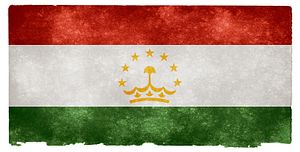The Asian Development Bank (ADB) released a report on Tajikistan in August that laudes the country’s strong post-civil war growth but warns that future gains are not guaranteed. The 157-page “country diagnostic study” looks to identify “critical development constraints” to growth and recommend solutions. As with most international financial institutions, the ADB does not directly address politics in the report but in several areas alludes to needed political reforms.
In the report’s forward, Tajik Minister of Economic Development and Trade Nematullo Hikmatullozoda notes high growth–an average of 7.2 percent per year between 1997 and 2015–but also comments that Tajikistan “needs to revive its industrial sector” and “create more decent jobs for skilled workers.”
That growth, however, and the post-conflict recovery was thanks to huge growth in remittance inflows and “a favorable external environment” i.e. growth in Russia. Rising aluminum and cotton prices in the late 1990s also contributed significantly to Tajikistan’s dynamic growth. But each of these areas are under strain–Russia’s economy and the likewise the value of remittances have fallen, as have commodities prices.
Benefiting from the good times is not the same thing as developing a strong economic base.
The report goes on to cover five major challenges: access to financing, uninterrupted power supply, quality transport infrastructure, improvements in governance and rule of law, and “addressing market imperfections.”
Tajikistan’s banking sector, to put it lightly, is a dumpster fire. EurasiaNet put it like this recently: “Barely a day passes at Tajikistan’s most troubled bank without some grim or bizarre news.” There have been forced unpaid vacation for employees at Tojiksodirotbank, the country’s second largest bank, and firings. Meanwhile, earlier this year the IMF was in negotiations to bail out the Tajik banking sector but the latest news, from July, still described such a deal as “pending” with at least three major banks facing the specter of bankruptcy, withdrawal limits, and overarching nervousness.
With that in mind, the ADB’s first challenge–financing–is particularly acute.
To sustain growth, Tajikistan needs to “explore new business and investment opportunities beyond the existing drivers of growth.” The advice is fairly standard: moving from low-skill, low-value industries to high-skill, high-value ones; opening cooperation between public enterprises and private business; improving the quality of goods produced as well as diversifying exports.
As good as the advice may be, given Tajikistan’s current political system it seems unlikely that Dushanbe will suddenly embrace policies that will lead to job growth, improved education, innovation, and foreign investment.
A particular roadblock is the contradiction between the conditions needed for the development of a dynamic private sector and the reality of governance in Tajikistan. The ADB lists solid economic trends: that in early stages of development “when the private sector is weak, government may play a more active role in prioritizing sectors for investments” but in subsequent stages the government should become “more of a facilitator.”
The barriers to a dynamic private sector are many: low domestic savings, declining loans to private enterprises, and persistent concerns about the difficulty of obtaining loans, namely concern about “collateral requirements and unofficial costs (bribes).” Foreign direct investment has remained “an insignificant source of external finance.” The reasons for this are obvious: the persistent (accurate) perception of corruption and investor worries regarding their rights and contract protections. “Tajikistan’s ranking on the strength of legal rights placed it at the bottom among comparator countries,” the report notes. The largest source of FDI had been Russia, but following the 2008 financial crisis–and the present dour economic climate–that line of investment has declined.
International investors–when given a choice in where to invest in Central Asia–generally don’t bet on Tajikistan. Without even touching rights issues, along with the perception of corruption is the perception of political instability. Accurate or not, the perception exists that Tajikistan is a country on the edge. President Emomali Rahmon’s concentration of power–through jailing, killing, and intimidating his opposition–may lead to a form of authoritarian stability; but it won’t lead to rapid investor confidence.
The ADB’s report is extensive, but not necessary thorough. By avoiding discussing politics, international financial institutions are ignoring an aspect of sustainable economic growth: political stability.
































